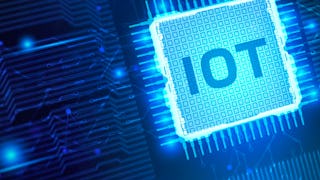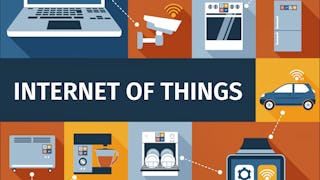Architecting smart IoT (Internet of Things) devices involves designing and developing interconnected devices that can collect and exchange data over the internet to perform various functions and tasks. These devices are equipped with sensors, microcontrollers, communication modules, and software, allowing them to interact with the physical world and communicate with other devices or central systems.

Enjoy unlimited growth with a year of Coursera Plus for $199 (regularly $399). Save now.

Introduction to Architecting Smart IoT Devices

Instructor: Martin Timmerman
30,184 already enrolled
Included with
(311 reviews)
Skills you'll gain
Details to know

Add to your LinkedIn profile
13 assignments
See how employees at top companies are mastering in-demand skills

There are 3 modules in this course
This first module will define what embedded systems are by looking at the most important EmS market areas and different characteristics of EmS. Furthermore we will talk about dealing with multiple events at the same time, the importance of world time, and the duration of an EmS lifecycle.
What's included
7 videos14 readings4 assignments
In this module we will be tackling the problems of existing embedded systems and system hackings, the failure of systems and how we can make these systems more successful, the influence of production quantity, and the increasing EmS complexity.
What's included
6 videos20 readings5 assignments
This last module will discuss the different models to design a system lifecycle, the gathering of requirements for architectural design, and the use of structural models and modelling language.
What's included
6 videos15 readings4 assignments
Instructor

Offered by
Explore more from Computer Security and Networks

28DIGITAL
 Status: Free Trial
Status: Free TrialUniversity of California, Irvine
 Status: Free Trial
Status: Free TrialUniversity of California, Irvine
Why people choose Coursera for their career




Learner reviews
311 reviews
- 5 stars
53.69%
- 4 stars
24.43%
- 3 stars
12.21%
- 2 stars
2.57%
- 1 star
7.07%
Showing 3 of 311
Reviewed on Oct 28, 2017
It was a very good course which gave me a sound understanding of the basic fundamentals involved in designing and architecting IoT based embedded systems.
Reviewed on Sep 30, 2020
The text material is good, however there are a few missing links and out dated pages that make the quizes a bit confuse.Awesome instructor.
Reviewed on Jan 30, 2019
I would recommend this course to all my friend.Thank You

Open new doors with Coursera Plus
Unlimited access to 10,000+ world-class courses, hands-on projects, and job-ready certificate programs - all included in your subscription
Advance your career with an online degree
Earn a degree from world-class universities - 100% online
Join over 3,400 global companies that choose Coursera for Business
Upskill your employees to excel in the digital economy
Frequently asked questions
To access the course materials, assignments and to earn a Certificate, you will need to purchase the Certificate experience when you enroll in a course. You can try a Free Trial instead, or apply for Financial Aid. The course may offer 'Full Course, No Certificate' instead. This option lets you see all course materials, submit required assessments, and get a final grade. This also means that you will not be able to purchase a Certificate experience.
When you enroll in the course, you get access to all of the courses in the Specialization, and you earn a certificate when you complete the work. Your electronic Certificate will be added to your Accomplishments page - from there, you can print your Certificate or add it to your LinkedIn profile.
Yes. In select learning programs, you can apply for financial aid or a scholarship if you can’t afford the enrollment fee. If fin aid or scholarship is available for your learning program selection, you’ll find a link to apply on the description page.
More questions
Financial aid available,


